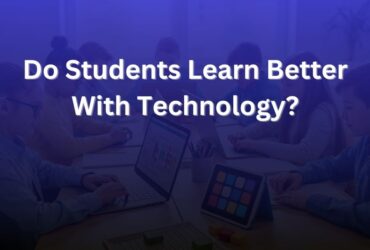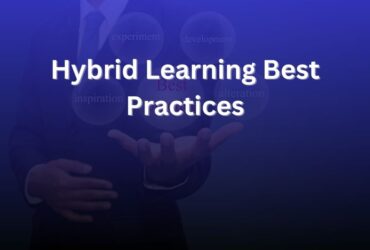You’re about to dive into the exciting world of educational technology. In this article, we’ll explore how digital tools are reshaping classrooms, empowering students, and revolutionizing the way we learn. From AI-powered tutors to virtual reality field trips, discover how tech is making education more accessible, engaging, and effective than ever before.
The landscape of education is undergoing a dramatic transformation, driven by rapid advancements in technology. As we navigate the 21st century, the integration of digital tools and platforms into learning environments is not just a trend, but a necessity. This shift is reshaping how we teach, learn, and interact with educational content, opening up new possibilities for both educators and students alike.
The Rise of Online Learning Platforms
One of the most significant changes in the educational landscape has been the explosive growth of online learning platforms. These digital classrooms have broken down geographical barriers, making education accessible to anyone with an internet connection. From massive open online courses (MOOCs) to specialized programs like the MSN nursing online program, learners now have unprecedented access to knowledge and skills development.
Online platforms offer flexibility that traditional classroom settings can’t match. Students can learn at their own pace, revisit materials as needed, and balance their education with work and personal commitments. This accessibility has been particularly transformative for adult learners and professionals seeking to upskill or change careers.
Personalized Learning Through AI and Machine Learning
Artificial Intelligence: The New Teaching Assistant
Artificial Intelligence (AI) is revolutionizing the way we approach personalized learning. AI-powered systems can analyze a student’s learning patterns, strengths, and weaknesses, tailoring educational content to meet individual needs. This level of customization was once a pipe dream for educators, but it’s now becoming a reality in digital classrooms around the world.
AI tutors can provide instant feedback, answer questions, and even predict areas where a student might struggle. This real-time support helps learners stay engaged and motivated, reducing the risk of falling behind or losing interest in the subject matter.
Data-Driven Insights for Educators
Machine learning algorithms are giving educators unprecedented insights into student performance and engagement. By analyzing vast amounts of data, these systems can identify trends and patterns that might be invisible to the human eye. This information allows teachers to make data-driven decisions about curriculum design, teaching methods, and intervention strategies.
With these insights, educators can proactively address learning gaps, provide targeted support to struggling students, and challenge high-performers with more advanced material. The result is a more efficient and effective learning environment that benefits all students.
Immersive Learning Experiences
Virtual and Augmented Reality in Education
Virtual Reality (VR) and Augmented Reality (AR) are transforming the way students interact with educational content. These technologies offer immersive experiences that bring abstract concepts to life, making learning more engaging and memorable.
Imagine students taking a virtual tour of ancient Rome, exploring the human body from the inside, or conducting dangerous chemistry experiments in a safe, virtual environment. These experiences not only capture students’ attention but also help them develop a deeper understanding of complex subjects.
Gamification: Making Learning Fun
Gamification is another powerful tool in the edtech arsenal. By incorporating game-like elements into educational content, educators can tap into students’ natural desire for competition, achievement, and reward. This approach has been shown to increase motivation, engagement, and knowledge retention.
From language learning apps that turn vocabulary practice into a fun challenge to math games that make problem-solving an adventure, gamification is making education more enjoyable and effective for learners of all ages.
The Future of Assessment and Credentialing
Rethinking Traditional Testing
As education evolves, so too must our methods of assessment. Traditional exams and standardized tests are being supplemented or replaced by more dynamic and comprehensive evaluation methods. Continuous assessment through digital platforms allows for a more holistic view of a student’s progress and capabilities.
Project-based assessments, digital portfolios, and peer evaluations are becoming increasingly common, providing a more nuanced picture of a student’s skills and knowledge. These methods not only assess what students know but also how they apply that knowledge in real-world scenarios.
Blockchain and Digital Credentials
The rise of digital credentials, backed by blockchain technology, is revolutionizing how we verify and share educational achievements. These secure, tamper-proof digital certificates provide a more comprehensive record of a learner’s skills and experiences than traditional transcripts.
Digital credentials are particularly valuable in today’s fast-paced job market, where employers are looking for specific skills rather than just degrees. They allow job seekers to showcase their exact competencies and achievements, giving employers a clearer picture of a candidate’s capabilities.
Challenges and Considerations
The Digital Divide: Ensuring Equal Access
While the digital revolution in education offers incredible opportunities, it also presents challenges. The digital divide – the gap between those who have access to technology and those who don’t – remains a significant concern. As educational technology becomes more prevalent, it’s crucial to ensure that all students have equal access to these tools and resources.
Efforts to bridge this gap include initiatives to provide low-cost devices, expand broadband access in underserved areas, and develop offline learning solutions. Addressing the digital divide is essential to prevent technology from exacerbating existing educational inequalities.
Balancing Tech and Human Touch
As we embrace educational technology, it’s important to remember the irreplaceable value of human interaction in learning. The challenge lies in finding the right balance between leveraging technology and maintaining meaningful personal connections between educators and students.
Blended learning models, which combine online and face-to-face instruction, offer a promising solution. These approaches aim to harness the benefits of technology while preserving the social and emotional aspects of traditional classroom learning.
Preparing Educators for the Digital Age
For educational technology to reach its full potential, educators must be equipped with the skills to effectively integrate these tools into their teaching practices. Professional development programs focused on digital literacy and tech integration are becoming increasingly important.
Teachers need support to not only learn how to use new technologies but also to understand how to leverage them to enhance learning outcomes. This ongoing training is crucial as the edtech landscape continues to evolve rapidly.
The Road Ahead: Emerging Trends in EdTech
AI-Powered Adaptive Learning Systems
The next frontier in personalized learning is adaptive learning systems powered by advanced AI. These systems will be able to create truly individualized learning paths, adjusting in real time to a student’s progress and learning style.
Internet of Things (IoT) in Education
The Internet of Things is set to transform physical learning spaces. Smart classrooms equipped with IoT devices can optimize environmental conditions for learning, track resource usage, and even automate administrative tasks, allowing educators to focus more on teaching. Moreover, the ability to create an IoT app empowers educators and administrators to customize applications that address specific educational needs, such as student engagement, device management, and data analysis, ensuring a more connected and efficient learning environment.
Microlearning and Nano-degrees
As the demand for lifelong learning grows, we’re seeing a trend towards microlearning – bite-sized educational content that can be consumed quickly and easily. Nano-degrees, which focus on specific skills or competencies, are becoming popular alternatives to traditional degree programs, especially for working professionals.
The digital revolution in education is not just changing how we learn; it’s redefining what it means to be educated in the 21st century. As technology continues to evolve, so too will our educational systems and practices. The key to success lies in embracing these changes while ensuring that technology serves as a tool to enhance, rather than replace, the human elements of teaching and learning.
By leveraging the power of educational technology, we can create more inclusive, engaging, and effective learning experiences for students of all ages and backgrounds. As we look to the future, the possibilities for innovation in education are boundless, promising a world where learning is more accessible, personalized, and impactful than ever before.












































Leave a Reply